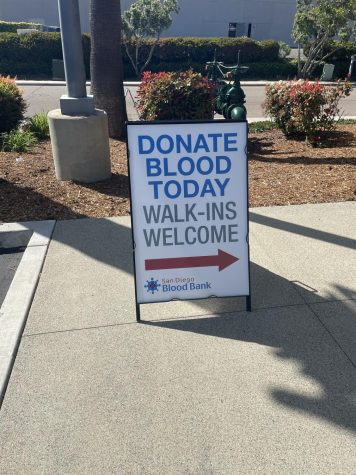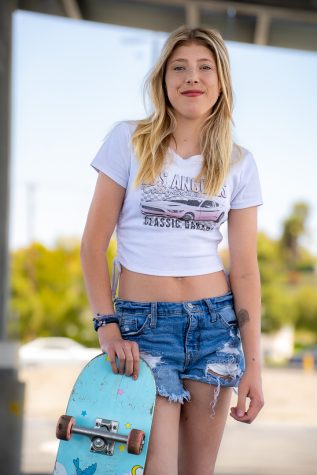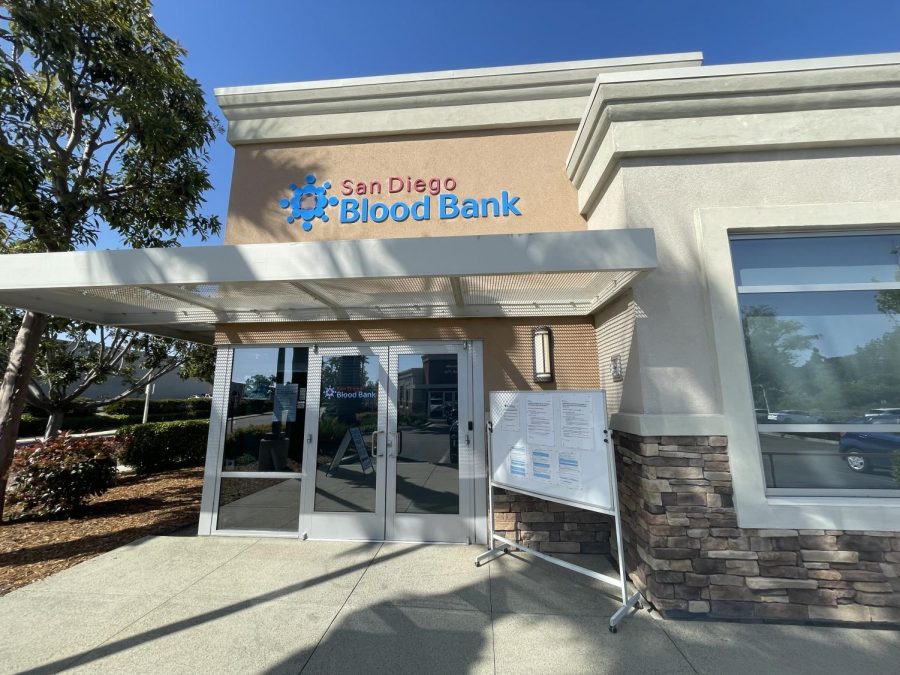The San Diego Blood Bank Saves Lives
On Via Centre Drive in Vista, the San Diego Blood Bank awaits new and returning donors to support their community. Darkened windows for privacy and modern structuring provide a comforting and reliable building for donations to take place.
Celebrating its seventy-third year as a medical center and establishment for community relations, the San Diego Blood Bank has been a center for safety and emergency preparedness for disasters all across the nation. Through disasters such as the World Trade Centers falling in New York to the COVID-19 pandemic that affected millions of people worldwide, the medical professionals that transport and extract blood have cared for many in need.
“It’s a free way for people who want to come together after a disaster. If people want to help, one of the easiest things you can do is donate blood. You can donate in someone’s name or randomly, it’s free and it’s a gift not everyone can give,” Claudine Van Gonka, the director of community relations and media for SDBB, retold stories about the events that took place in New York on 9/11.
“Not a lot of people know that on 9/11, the blood from SDBB was the first blood to hit New York City that day,” Van Gonka said. “The SDBB has a relationship with the military through supplying them in the past,” This relationship between the military and the San Diego Blood Bank created an opportunity to safely and effectively supply blood to those in need.
“We were able to get 380 units of blood on military transport, so blood from San Diego was the first on the scene to help people who needed it all the way in New York. To me, if that doesn’t create a sense of community, I don’t know what does, honestly.” Van Gonka said as she beamed with pride.

Community stands as the main motif that SDBB tries to represent in its work. Since its grand opening in 1950, mobile blood donation centers, volunteer centers, high school blood drives and nine donor centers have been established.
Sage Creek sophomore Makena Connolly is one of the regular donors to SDBB and other organizations that have established relationships with high schools in the San Diego area. Her experience was full of gratitude, kindness, and especially a community. Her drive to donate blood started with overcoming her fears and trusting in herself.
Connolly noted that overall, “It’s just mental. It doesn’t hurt badly, it just hurts for a couple of seconds. But it was worth it because it helps so many people and I got to save 8 babies. It’s not that bad of a process, even if you do it once, you’re saving lives.”
Van Gonka noted that every 2 seconds in the U.S., someone needs a blood transfusion. Cadence Mitchell, an eighteen-year-old homeschooled junior is one of these regular blood recipients.
Born with hypoplastic left heart syndrome, Mitchell only has three working chambers in her heart and constantly needs open-heart surgeries to monitor her pacemaker. This means receiving colossal amounts of blood.
“She’s a heart patient, liver patient, a GI patient and she’s had a lot of surgeries, so she will constantly need blood transfusions and surgeries,” Mitchell’s mother, Melissa, said regarding her daughter. Melissa and Chance, Cadence’s brother, have also undergone multiple open heart surgeries and have pacemakers.
In 2020, when the COVID-19 pandemic arose, it changed the lives of millions of people. What many don’t know is that for the first time in multiple decades, a national blood crisis was declared because of the shortages that blood banks across the world experienced. San Diego Blood Bank was one of these places.
The Mitchell family has three members with congenital heart defects, and still suffer the damage that the coronavirus has done to their access to the healthcare community.
“It was a huge struggle not only from the loss of blood but also because of our health. We had to worry about getting COVID, ending up in the hospital, and ending up not having enough blood, transfusions, care, just everything. COVID was a very high-risk threat for us,” Melissa Mitchell said.
After quitting her job to take care of her children, Melissa Mitchell is able to define just how important donating blood is to people around the world.
“It has saved Cadence’s life a number of times that I can’t even count. It’s necessary for people who have planned surgeries and those who have unexpected illnesses and they need blood right away. There’s constantly a demand and it doesn’t even hurt,” she said.

Cadence Mitchell has even received blood that was donated directly from family and friends to show their support.
Despite all of this hardship, the Mitchell family preserves. Cadence skateboards, rock climbs, acts, models, horseback rides and even owns a homemade sushi business. Blood transfusions and surgeries will be a constant factor in Mitchell’s life, but that doesn’t mean she will stop exploring.
As for the San Diego Blood Bank, they have resurfaced after the drastic shortage of blood in 2020, but there is a constant need for donations. The only requirements to donate are to be over the age of 17, weigh over 114 pounds and be in general good health.
But in certain high schools that hold donations, exceptions can be made.
“High school and college drives count for about 20% of the blood that we collect at the SDBB. But there are different reasons why we might run low at any given time,” Van Gonka said. She emphasized that “just because we’re not in crisis doesn’t mean that we don’t have a demand.”
SDBB’s saying is, “Connecting diverse communities to save and improve lives through blood and biotherapies” which reminds citizens in diverse communities of the importance of saving lives. Save the lives of friends, family, neighbors or simply strangers who are in need of support. There are so many people on the planet, and yet there are not nearly enough with the courage to give.
As Van Gonka said, “The need for blood knows no boundaries when it comes to race, age, and ethnicity. People of all ages and ethnicities need blood for various reasons. It’s the community’s duty to come together and help each other, and have that blood available for when it’s really needed. Blood donations bring people together as a community. Always.”



Snoopy ◊ May 23, 2023 at 11:39 am
Be cool. Give blood
DenHol Lopman ◊ May 10, 2023 at 9:18 am
Fantastically written article Georgia! I like how you were able to shed light on this valuable part of our society while also showing how each person affected by blood loss or who were donating blood was able to overcome what they had faced. Great Job!